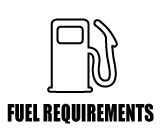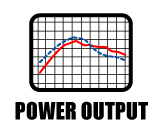Map Notes for 2002-2005 WRX
Supported Vehicles:
USDM 2002-2005 WRX
Map Revision:
| Map | Version |
|---|---|
| Stage1 | v400 |
| Stage1+EBCS | v400 |
Map Availability:
- Download from the COBB Tuning Subaru WRX OTS Map Database.
Required Accessport Firmware:
- V3: 1.7.3.1-16468 or greater
Non-Performance Maps
* Not intended for aggressive driving*
Anti-Theft Mode
- Will not allow vehicle to start
Economy Mode MT
- Fuel Requirements: 91 octane or better
- Intake Requirements: Stock airbox or COBB Tuning SF Intake SUB00001IA
- Exhaust Requirements:
- Stock or COBB Cat-Back Exhaust 512100
- Boost Control Solenoid: Stock or COBB 3-Port Boost Control Solenoid 712750
- Boost Targets: Mechanical minimum (typically around 6psi - 10psi)
- Rev Limiter: 7100 RPM
Monitoring Boost Levels:
The best way to determine if you are hitting target boost is to watch the TD Boost Error parameter. This parameter is your target boost (including altitude and temperature compensations) minus your actual boost (negative values mean you are over the target by the amount while positive values mean you are under). Ideally you want this value to be between 0 and 1.0 at wide open throttle (WOT), but -1.0 to 1.0 is acceptable assuming that you don’t have any significant knock corrections. Overboosting is more likely to occur in higher gears and with colder outside temperatures, so be sure to verify boost levels during these conditions.
High Altitude:
A quick note for those of you that live at higher altitudes. It is common for turbocharged cars at higher altitudes to run less boost pressure due to lower air pressure and air density. Your turbocharger has to work harder to compress a less dense air mass compared to the same turbocharger at sea level. This must be factored in when determining if your turbocharger is running the proper amount of boost pressure and not being pushed beyond its efficiency range.
Example: If you live in Denver at 5280 ft and are trying to run a peak boost pressure of 15 psi, your turbocharger has to work the equivalent of making ~17.5 psi at sea level.
There are barometric compensations within the factory ECU that lower boost targets as you climb in altitude in an effort to keep the turbocharger in its optimal range. The COBB performance maps utilize these compensations and therefore, it is perfectly normal for the final boost target to be lower than what is listed for your map.
Revision Notes:
| Version | Notes: |
|---|---|
| v400 | Maps updated to eliminate unnecessary DTC Supression or updated versions for parity with other maps/vehicles within the platform |
| v350 | Maps have been updated to eliminate unnecessary DTC suppression. |
| v311 | Misc. maintenance updates. |
| v310 | Massive update for Stage1 mapping. Includes refinements to boost control and overall ignition timing strategy. |
| v300 | Now compatible with Launch Control feature (MT only). For complete details on how to enable and use the LC functionality, please visit this FAQ. |
Copyright 2025 © COBB Tuning Products LLC. All Rights Reserved. | www.cobbtuning.com


